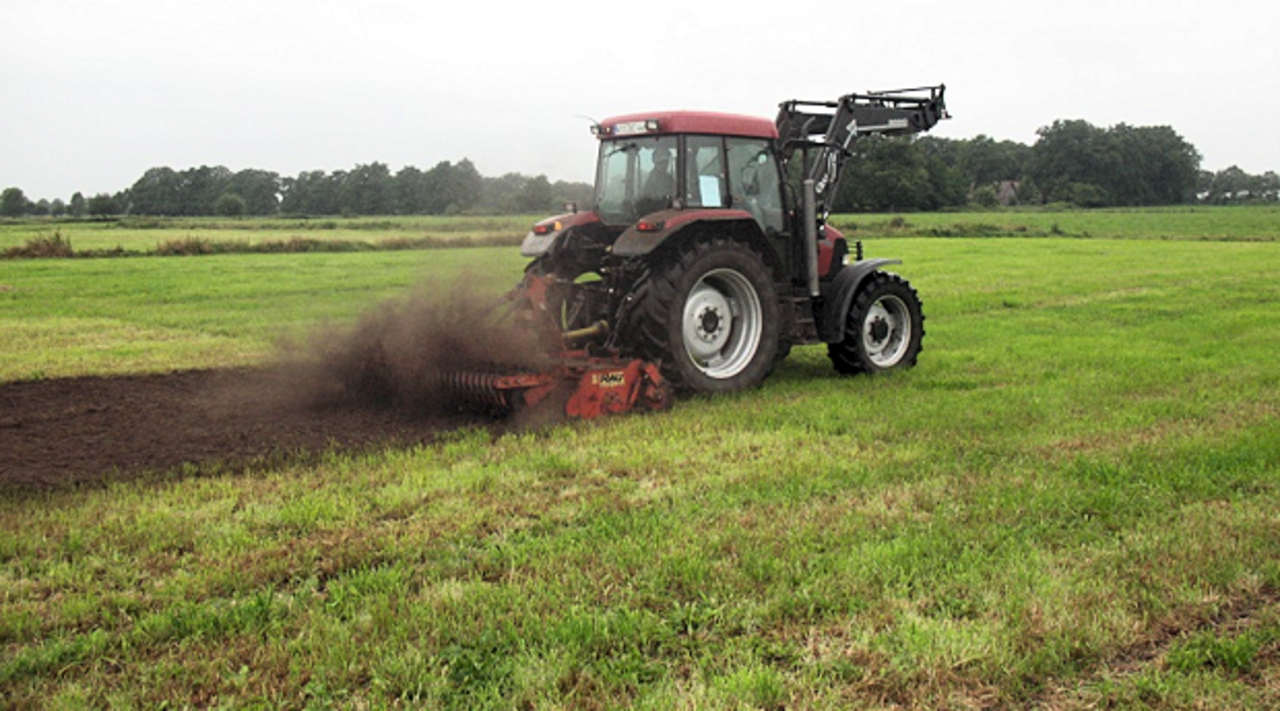Project
Greenhouse gas emissions following grassland renovation

Impact of grassland renovation/conversion on greenhouse gas emissions, water pollution and need-oriented fertilization
What is the impact of grassland renewal by reseeding on N2O emissions and nitrate leaching? Are procedures to renew grassland without killing off the sward suitable to lower emissions? We tackle these questions in two field studies in Lower Saxony.
Background and Objective
Current economical and structural changes in agriculture are associated with intensification of grasslands and conversion of grassland to arable land. Following tillage during grassland renewal or conversion, negative environmental impact (e.g. enhancement of groundwater pollution due to nitrate leaching and increased greenhouse gas emission) can occur.
There is few knowledge on site-specific effects by different techniques of grassland renewal, maintenance or conversion on carbon (C) and nitrogen (N) transformations, although these aspects are highly relevant for adapted fertilization, greenhouse gas emissions and groundwater pollution. In this project, we will assess the impact of different techniques of grassland renovation/conversion on greenhouse gas emissions, water pollution and need-oriented fertilization.
Target Group
Approach
Field plot trials comparing grassland renewal/conversion techniques are conducted in cooperation with the Lower Saxony Chamber of Agriculture on two sites with different soils (Plaggic Anthrosol at Wehnen; Histic Gleysol at Ihausen) with weekly measurements of C and N dynamics over two years.
We test the following treatments:
- Control (permanent grassland)
- Grassland improvement by direct seeding
- Grassland renewal without tillage but with chemical killing off and subsequent direct seeding
- Grassland improvement with chemical killing off and ploughing
- Grassland conversion to arable land (maize) with chemical killing off and ploughing
N2O, CH4 and CO2 emissions are measured using closed chambers. Stable isotope data are used to investigate production and consumption processes of N2O. N losses via nitrate leaching are estimated from weekly measurements of mineral N (Nmin) in surface soils and measuring 0 to 90 cm Nmin profiles twice a year in spring and fall. Further elucidation of N dynamics will be obtained from isotope tracer experiments with intact soil columns.

Our Research Questions
- Are N2O fluxes enhanced by grassland renewal or its conversion to arable land?
- Which processes control enhanced N2O fluxes?
- Is it possible to counteract enhanced N2O fluxes by lowering the intensity of disturbance during grassland renewal?
- How much reactive nitrogen is lost via denitrification?
- How important are the so-called indirect N2O emissions induced by nitrate leaching in comparison to direct emissions from the soil surface?
- How do the different methods of grassland renewal compare with respect to loss of soil organic matter by enhanced mineralization?
- What rare the consequences with respect to CO2 flux to the atmosphere and nitrate leaching to the groundwater?
- What is the impact of the different methods of grassland renewal on forage yields and need-oriented fertilization?
Results
Thünen-Contact

Involved Thünen-Partners
Funding Body
-
Deutsche Forschungsgemeinschaft (DFG)
(national, öffentlich)
Duration
1.2013 - 12.2015
More Information
Project funding number: Graduiertnekolleg 1397
Project status:
finished
Publications
- 0
Buchen C, Lewicka-Szczebak D, Flessa H, Well R (2018) Estimating N2O processes during grassland renewal and grassland conversion to maize cropping using N2O isotopocules. Rapid Comm Mass Spectrometry 32:1053-1067, DOI:10.1002/rcm.8132
- 1
Buchen C, Well R, Helfrich M, Fuß R, Kayser M, Gensior A, Benke M, Flessa H (2017) Soil mineral N dynamics and N2O emissions following grassland renewal. Agric Ecosyst Environ 246:325-342, DOI:10.1016/j.agee.2017.06.013.
- 2
Buchen C, Lewicka-Szczebak D, Fuß R, Helfrich M, Flessa H, Well R (2016) Fluxes of N2 and N2O and contributing processes in summer after grassland renewal and grassland conversion to maize cropping on a Plaggic Anthrosol and a Histic Gleysol. Soil Biol Biochem 101:6-19, DOI:10.1016/j.soilbio.2016.06.028

![[Translate to English:] [Translate to English:]](/media/_processed_/6/4/csm_titel_CO2Kampagne8_afeea2273e.png)
![[Translate to English:] [Translate to English:]](/media/_processed_/4/1/csm_titel_93px_CO2Kampagne8_9b0f3354d4.png)





